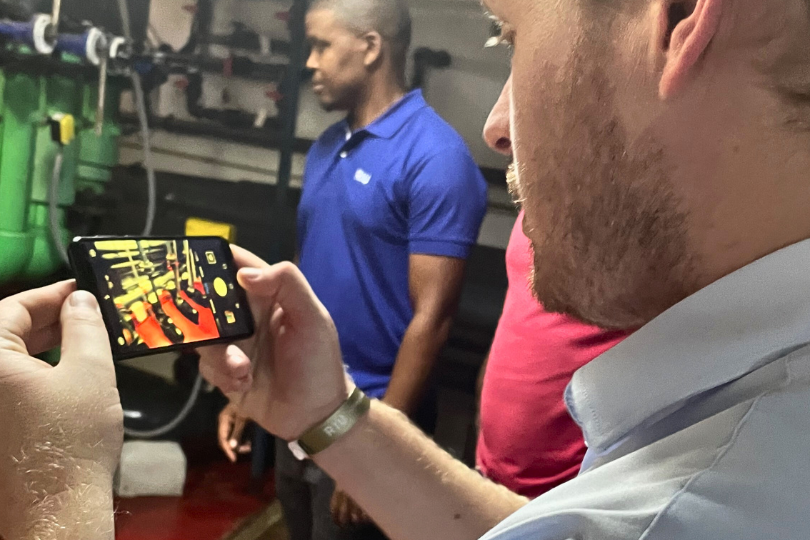In the world of dry-docks, we know that taking a ship out of service is costly for cruise lines and that a well-orchestrated and efficient operation is crucial. These complex projects involve numerous entities, from contractors and transportation businesses to customs officials and warehouse companies, all working diligently to guarantee a seamless dry-dock execution. In this intricate process, quietly supporting it all, you will find us – the logistics teams, the invisible enablers.
Like most stakeholders involved in a dry-dock, the logistics team helps ensure that the project runs to schedule by supporting the cruise lines and contractors, as well as liaising with numerous other stakeholders. Simply put, our job has two main objectives:
1. Help the cruise line technical team plan efficiently through providing realistic timelines and information regarding local resources and requirements
2. Make sure that the contractors hired by the cruise line can carry out their job by getting them the correct items, in the right location, at the time it is required
The role of the logistics team sounds straightforward, but it can be highly complex.
Challenges & Solutions
There are multiple challenges for logistics teams during a dry-dock, whether it is related to international shipping, warehouse & customs brokerage, or shipyard related activities. Some of these challenges can be mitigated with good planning and communication, while others are out of the control of the logistics team, which then needs to define and execute the best possible solutions.
Arguably the most common and problematic of issues a logistics team need to consider is the technical team or a contractor not being able to work, due to delayed shipments or customs issues, which can then impact other parts of the dry-dock operation. Ways to mitigate this issue includes advance planning with well-prepared cargo consignment instructions, and alternative warehousing options for advance storage. If the delay has already occurred, this can be a good test of the strength of the relationship a logistics team has with the customs officials to expedite clearance, otherwise they may need to look at quickly sourcing alternative materials.
Other challenges can include local regulations regarding working hours or opening hours that contrast with the schedule of the dry-dock operation. Provisions taxes is also a common issue that logistics teams need to manage carefully. In most cases all these issues can be avoided by the logistics team through good planning and communication or overcome through strong relationships and know-how gained through years of dry-dock experience.
Some issues are more unexpected, and I have one favourite example. Cruise ship propellers are huge. How would you transport a cruise ship propeller from Marseille to Cadiz? This was the question for one cruise line technical team, which decided to proceed by road transportation, but unfortunately underestimated the level of paperwork and number of authorities included to make the operation happen in time. At short notice, the logistics and port agency teams arranged to freight the propeller across the sea on a chartered cargo vessel, acting as the ship’s agent. The operation was more expensive, but significantly less costly than the delay caused in transporting the propeller by road. Completing the operation cycle, and without the time constraints of the dry-dock, the reverse logistics saw the original propellers returned to Marseille via road.
The evolution of dry dock logistics
The cruise industry has gone through massive changes in recent years, and this is also reflected in the service provided by logistics teams during a dry-dock. Technology is the most common driver and enabler of change, and collaborative cloud-based planning and operations tools are making communication between stakeholders more efficient, which ultimately results in smoother operations.
Another key change is that it is increasingly common for the logistics team to handle not only the cruise line logistics, but also the contractor logistics, enabling an inherently more cohesive and smoother overall operation. Finally, a significant shift in project approach, means increased flexibility being offered by logistics teams, which can now relocate to various locations, as required by the cruise line, not only for the actual dry-dock, but also for the pre and post dry-dock operations.
The invisible enabler
In the realm of dry-docks, logistics teams often play an unseen yet vital role, acting as the “invisible enabler”. It’s a reminder that the best service is often provided through the elements that go unnoticed, and that dedication to these details is what ensures seamless operations.
By Nohemí Alcaúcer Martí
Port Operations Logistics Director, Intercruises Shoreside & Port Services
Innovators: Shaney Robertshaw Wright on Health & Safety
18/04/2024
Discover the unique challenges faced by H&S managers in the cruise industry...
Sustainability: Best Practices for Shorex
02/01/2024
The foundational principals helping to shape the development of our shore…
Seatrade Awards – Intercruises wins Shorex of the Year 2023
10/09/2023
Our National Geographic Day Tour, ‘Marine Treasures of Mallorca,’ is crowned…





